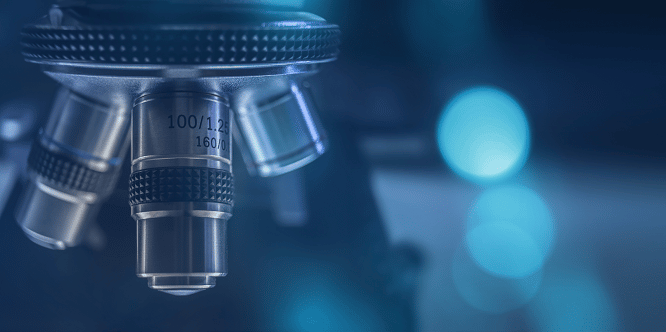TAKEAWAY: The Department of Transportation (DOT) is considering amendments to its drug testing program to include oral fluid testing as an acceptable workplace drug testing method. In light of this potential shift, oral-fluid testing is becoming more popular with Canadian and US employers. Keep reading to learn more…
Jump Ahead

Contact SureHire USA for oral fluid express or laboratory testing either as a follow-up test method or a stand-alone service.
Servicing both Canadian and American employers, SureHire can help employers navigate the shifting legal landscape stemming from the emerging oral fluid testing trend.
Workplaces carry out drug testing in various situations, such as post-incident, pre-employment, for site access, or in the case of reasonable suspicion. Drug testing serves several purposes, from helping to maintain a safe and productive workforce to avoid legal liabilities.
Just as there are various reasons for drug testing, an employer can choose from different drug testing methods, including hair, urine, and oral fluid (saliva) testing. All testing methods have their pros and cons, and whilst urine testing has traditionally been the preferred method, recent developments are driving the trend towards oral fluid as a preferred testing protocol. This stems from the Department of Transportation (DOT) considering amendments to their drug testing program to include oral fluid testing as an acceptable workplace drug testing method.
In light of this potential shift, oral-fluid testing is becoming more popular with Canadian and US employers. This article explores some of the benefits and downsides of various drug testing methods, and essentially, why oral fluid testing is gaining popularity.
Urinalysis: The traditionally preferred method of testing
Specific drug testing methods are often favoured in certain situations. For example, hair follicle testing can detect historical drug use and is therefore often used for follow-up testing. Laboratory testing is required for this drug testing method.
Urine drug testing has traditionally been the preferred method for substance detection. Urine tests can accurately check for a wide range of substances and have a long detection window. For example, they can detect cannabis use many weeks after an individual has consumed it.
Each testing method has its pros and cons and some will be favoured over others in specific situations. Let’s explore the reasons why oral fluid testing is gaining popularity with employers.
3 reasons why oral fluid testing is becoming more popular
Oral fluid testing has various associated benefits, making it appealing on several levels. Following are some of the main reasons it’s becoming a more popular choice with employers.
1. Oral fluid testing can more accurately detect recent drug use
Oral fluid drug testing is the preferred method for post-incident or reasonable suspicion situations because it provides a short window for substance detection. This small detection window could be seen as a downside in some instances, although it can also be advantageous.
Several variables determine how long a substance will remain detectable in an individual’s oral fluid sample. It depends on the substance ingested and individual differences. Usually, though, oral fluid testing has a 12 to 24-hour detection window. Therefore, it’s an excellent method for detecting current impairment.
It can be argued that this is a more safety-focused approach. An impaired worker can immediately be removed from safety-sensitive job tasks if they test positive. For example, oral fluid testing can quickly identify a driver under the influence of drugs and they can consequently be removed from a situation where they risk harm to themself or others.
Oral fluid could become a superior drug testing method in the workplace because recent drug use may be more likely to impair work performance than drugs taken weeks ago.
2. Easy, fast, convenient, non-invasive, and affordable collection method
Different oral fluid collection devices are available on the market. Sometimes they utilize an absorbent cotton bud or a cotton wool swab. Often, an absorbent collector pad is used. It’s inserted between the teeth and gums and fluid travels up the pad until it obtains a sufficient sample. The collector pad can either be tested on-site or in a lab, the former making this an extra-fast and convenient testing method.
Oral fluid testing eliminates the need for police stations or hospitals. It’s a popular roadside testing method because transferring somewhere more private for testing is unnecessary. Overall, it’s highly convenient because there are few test location limitations.
Urine testing has traditionally been a more manual and time-consuming procedure, with the tester visiting a collection site to produce a urine sample, preparing the custody and control form (CCF), and then transporting the specimen to a recognized laboratory for analysis. Nowadays, the process can be faster, such as with the electronic CCF, but it’s still more complicated than that oral fluid testing.
Oral fluid testing saves employers time because there is no need for special collection facilities, and samples are easy to transport for laboratory-based testing. The results are available immediately, and such a fast turnaround time allows employers to make faster employment decisions to keep their workplace safe and healthy.
Oral fluid testing is less invasive and complicated than hair or urine testing. There is no necessity for a same-sex collector, and you avoid potential embarrassment issues associated with urine testing. Oral fluid testing also eliminates potential problems such as “shy bladder” in urine testing or insufficient hair in hair follicle testing.
3. Minimal potential for adulteration
Because oral fluid testing allows for direct observation, drug test adulteration is also less likely. Mouthwash, detox drinks, and mints or chewing gum are the most common adulteration methods.
Saliva replenishes the concentration of drug metabolites, so SureHire uses a 3-step process to ensure accurate test results. The steps are as follows:
- Testing participants rinse their mouths to remove any substances before oral fluid collection.
- The administrator checks the participant’s mouth for any signs of attempted adulteration, such as mints or candy.
- A 10-minute wait before testing allows time for saliva regeneration, so any contaminants are ineffective.
Issues with oral fluid testing
Despite its benefits, oral fluid testing has limitations, which could hinder its potential as the go-to testing method. Below are some of the advantages and drawbacks of oral fluid testing.
| Oral Fluid Express/Point Of Collection (POCT) | • Easily collected and can be conducted anywhere • Nearly impossible to adulterate • Minimally invasive • Provides the closest link to current use because of detection timelines (12 –24 hours) | • Does not accurately detect THC. An Oral Fluid Lab test MUST be completed in addition to the Oral Fluid Express due to the current accuracy limitations with Oral Fluid express devices and the requirements outlined by the Canadian Model. • No historical view of donor’s drug use • Level of the drug(s) in the system is not determined) |
| Oral Fluid Lab-Based | • Easily collected and can be conducted anywhere • Nearly impossible to adulterate • Minimally invasive • Provides the closest link to current/recent use because of detection timelines (12 –24 hours) • Tested by SAMHSA-certified lab and provides a legally defensible result • Canadian Model recommended • Identifies the level of the drug(s) in the body | • No historical view of donor’s drug use • Increased results turnaround time (2 –5 business days) |
The growing popularity of oral fluid testing | In conclusion
Oral fluid testing is becoming a more popular drug testing method with Canadian and U.S. employers. It’s an easy, fast, convenient testing method with little risk of adulteration that can detect current impairment. DOT’s recent decision to consider oral fluid as an acceptable testing method is also driving the shift in preference.
Most commonly used in post-incident and reasonable-suspicion circumstances, employers can also use oral fluid testing in other situations. Oral fluid testing offers a time-effective, qualitative, preliminary result for employers. Following an initial non-negative result, employers can use an oral fluid drug testing provider such as SureHire to obtain a quantitative, court-admissible test result.

Contact SureHire for oral fluid express or laboratory testing either as a follow-up test method or a stand-alone service. Servicing both Canadian and American employers, SureHire can help employers navigate the shifting legal landscape stemming from the emerging oral fluid testing trend.
You May Also Be Interested In…
- SureHire Occupational Testing Acquires COHR Health: A Positive Step Towards Safe, Healthy, Productive Workforces and Communities
 We are thrilled to announce that today, May 6, 2024, SureHire Occupational Testing has officially acquired COHR Health, a well-known leader in occupational health services. Read on…
We are thrilled to announce that today, May 6, 2024, SureHire Occupational Testing has officially acquired COHR Health, a well-known leader in occupational health services. Read on… - Occupational Testing Use Case – Mining
 In this case study, we will explore how mining companies can use various types of occupational tests to reduce Total Recordable Incident Rates (TRIR) long term.
In this case study, we will explore how mining companies can use various types of occupational tests to reduce Total Recordable Incident Rates (TRIR) long term. - 9 Strategies to Keep Workers Cool on Drilling Sites During Hot Summer Months
 This article delves into strategies to keep workers cool and safe on drilling sites during the hot summer months.
This article delves into strategies to keep workers cool and safe on drilling sites during the hot summer months. - Hearing Conservation Basics: How to Manage Occupational Noise
 Learn how to proactively mitigate occupational noise risks and help prevent NIHL among workers.
Learn how to proactively mitigate occupational noise risks and help prevent NIHL among workers. - Occupational Testing Use Case – Manufacturing
 Explore how manufacturing companies can use various types of occupational testing to assess job applicants, including statistics that show how that can reduce your Total Recordable Incident Rate over the long term.
Explore how manufacturing companies can use various types of occupational testing to assess job applicants, including statistics that show how that can reduce your Total Recordable Incident Rate over the long term. - How to Improve Workplace Safety Communication: Seven Strategies for Success
 This article explores seven practical strategies to improve workplace safety communication. From regular training sessions to utilizing various communication channels, these approaches will enhance the effectiveness of safety messages and ensure they reach and resonate with every employee.
This article explores seven practical strategies to improve workplace safety communication. From regular training sessions to utilizing various communication channels, these approaches will enhance the effectiveness of safety messages and ensure they reach and resonate with every employee.

